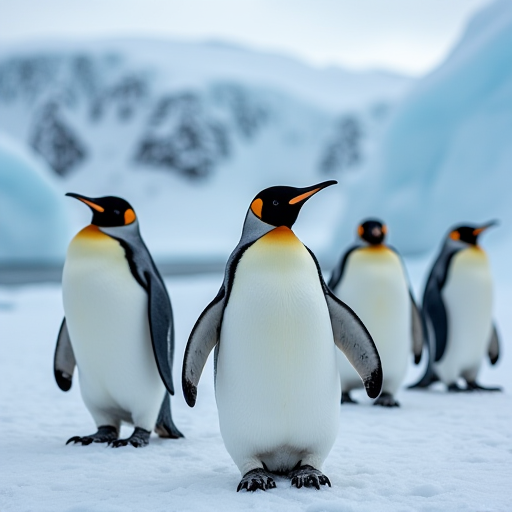
Why Can't Penguins Fly?
Penguins are among the most beloved and iconic birds in the animal kingdom. Known for their charming waddle, distinctive black and white plumage, and their ability to thrive in some of the harshest environments on Earth, penguins are fascinating creatures. One of the most intriguing aspects of penguins is their inability to fly, a characteristic that sets them apart from many other birds. This article explores the reasons why penguins can't fly and delves into their unique adaptations that make them exceptional swimmers instead.
Evolutionary Background
To understand why penguins can't fly, we must first look at their evolutionary history. Penguins belong to the family Spheniscidae, and their ancestors were once capable of flight. Fossil evidence suggests that these ancestors diverged from other flying birds around 60 million years ago. Over time, penguins have undergone significant evolutionary changes that have resulted in their current form as flightless birds.
Adaptations to Aquatic Life
The primary reason penguins lost the ability to fly is their adaptation to life in the water. As penguins evolved, they became more specialized for swimming and diving, which required a different set of physical attributes than those needed for flight.
-
Body Structure: Penguins have a streamlined body shape that reduces drag while swimming. This body shape, combined with powerful muscles, allows penguins to move efficiently through the water.
-
Wing Morphology: The wings of penguins have evolved into flippers. Unlike the wings of flying birds, penguin flippers are shorter and more rigid, making them ideal for propulsion in water. The bones in penguin flippers are flattened and broadened, providing the necessary surface area for effective swimming.
-
Dense Bones: Unlike the hollow bones typical of flying birds, penguins have dense bones that help them remain submerged underwater. This additional weight aids in diving by counteracting buoyancy.
-
Feathers and Insulation: Penguins have a unique feather structure that provides insulation and waterproofing, crucial for surviving in cold aquatic environments. Their feathers are tightly packed, with a layer of down closer to the skin for added warmth.
The Trade-Off: Flight vs. Swimming
The transition from flying to swimming represents a trade-off that has allowed penguins to exploit ecological niches that were inaccessible to other birds. By sacrificing the ability to fly, penguins have become adept swimmers, capable of diving to great depths in search of food. Some species, like the Emperor Penguin, can dive to depths exceeding 500 meters and remain submerged for up to 20 minutes.
Ecological Niches
Penguins primarily inhabit the Southern Hemisphere, with species found in Antarctica, New Zealand, Australia, South Africa, and South America. Their adaptations to swimming have allowed them to thrive in environments ranging from the icy waters of Antarctica to the temperate shores of South Africa. By specializing in aquatic hunting, penguins have access to abundant food sources such as fish, squid, and krill.
Conclusion
In conclusion, penguins can't fly because they have evolved to become highly specialized swimmers. Their adaptations, which include streamlined bodies, flipper-like wings, and dense bones, are perfectly suited for an aquatic lifestyle. While they may have lost the ability to soar through the skies, penguins have gained remarkable prowess in the water, allowing them to occupy unique ecological niches and survive in some of the most challenging environments on the planet.
Understanding the evolutionary journey of penguins not only highlights the incredible adaptability of life on Earth but also underscores the intricate balance of trade-offs that shape the natural world. Penguins may not fly, but their mastery of the seas is a testament to the marvels of evolution.
